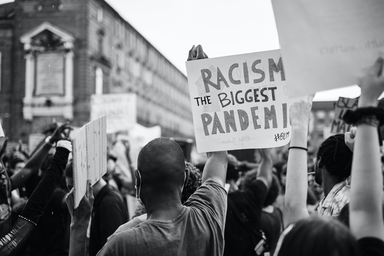The bottom line is that environmental racism is very real and raging rampant in impoverished minority communities. Like climate change, many argue that environmental racism is just another notion made by radicals. However, environmental racism is taking a large toll on minorities’ health, consumerism and resource accessibility.
What is environmental racism?
Environmental racism deals with the distribution of environmental burdens. However, environmental burdens are distributed at a disproportionate rate amongst impoverished minority communities compared to affluent white communities. Environmental racism is a form of systemic racism due to these disproportionate burdens, which include health hazards due to policies and practices. This forces minority communities to live within proximity to harmful factors, like toxic waste from chemical plants in Louisiana’s Cancer Alley and water sewage works in Flint, Michigan. Environmental racism also transcends into consumerism, such as everyday grocery option availability.
The grocery gap
Impoverished minority neighborhoods often lack healthy and affordable grocery chain options along with healthy restaurant chains. According to the United States Department of Agriculture (USDA), 39.4 million Americans continue to live in communities where it’s far easier for most residents to buy grape soda instead of a handful of grapes. Having access to healthy food may at first sound like a luxury to people, but it’s not. Healthy food does not have to be the most exotic fruit you can think of.
This disparity is known as the grocery gap. Low-income minority families have a harder time accessing healthy food retailers at affordable rates with nutritious values. To display this struggle more vividly, the Associated Press found that the nation’s largest chains have built new supermarkets in only a small fraction of the neighborhoods where they’re needed most.
Moreover, they are nearly bombarded with fast-food restaurants and chains. In predominantly Black neighborhoods, it has been found that there is a higher density of fast-food businesses than any other neighborhood demographic. They uphold a higher count of fast-food availability per square mile than their white neighborhood counterparts.
Accessibility and availability determine what a community can consume, which overall affects its health. The lack of healthy food options has led to an even bigger gap of health problems for these communities, such as obesity and diabetes. Having the ability to acquire fresh produce at an affordable price can change the entire life expectancy of a family of four. Since location determines accessibility, location matters.
Toxic waste in your backyard
How would you feel if you had toxic waste waiting for you on your doorstep every day? What if you couldn’t afford the move to a new house? What if nothing ever changed?
An excerpt from Making the Case for Linking Community Development and Health stated that conditions in impoverished neighborhoods can expose residents to harmful air quality and toxic materials at a far higher rate than any other.
Racial discrimination in environmental policy is what leads to the deliberate placement of toxic waste facilities in the backyard of impoverished Black families. Dr. Robert Bullard, the father of environmental justice, found that race is the primary marker when predicting the location of commercial hazardous waste facilities. With the same marker, he later found that Black children were five times more susceptible to lead poisoning due to waste proximity than white children, regardless of income.
With Dr. Bullard’s findings in mind, we must consider Flint, Michigan. In 2014, the city had changed its water source to the Flint River. The failed water treatment protocol and exposed over 100,000 Black inhabitants to toxic levels of lead. For nearly two years, the Black residents were ignored and dismissed when they shared concern about rising health issues. In 2019, officials claimed Flint officially had clean water. Although the health issues were finally addressed, residents remain wary, and many activists such as Little Miss Flint Amariyanna “Mari” Copeny continue to fight for clean water in Flint and all over America.
Similarly, Reserve, Louisiana, home to what is known to many as “Cancer Valley,” takes on the dark name due to the chemical plants in its backyard. With its toxic pollution drivers, the city’s Black residence suffers from unfortunate cancer-induced deaths. The United States Environmental Protection Agency (EPA) confirmed a higher risk of cancer throughout the industrial corridor between New Orleans and Baton Rouge, but the true bullseye was pinpointed in Reserve. Although the air toxicity is 50 times the national average, these revelations have been met with controversy from the plants. Reserve underwent nearly 50 years unchecked while its Black community was dying of cancer day after day.
The effects of environmental racism are expanding due to population growth in impoverished minority communities. Lack of accessibility to healthy, affordable food and clean, natural resources are deteriorating the health of these communities. Race and socioeconomic status play an evident and unfortunate role in neighborhood environmental factors, such as the disparities in health. This is only scraping the surface as environmental racism goes beyond just health via consumerism and exposure to toxic waste. It also relates to crime rates, job opportunities, education opportunities, wage gaps, housing gaps and even dates back to the historical redlining of neighborhoods.
Here’s some food for thought by Mary E. Northridge and Peggy M. Shepard from Harlem, New York’s health promotion and environmental centers: “To discount racism as a potential contributor to disparities in health by race and ethnicity is to ignore well-established social history, not to mention the experience of many afflicted persons. Denial serves to perpetuate inequity.”


